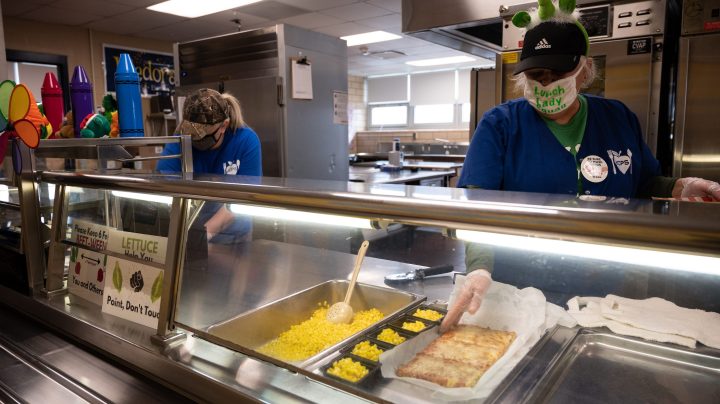
No chicken nuggets? How supply chain snags are affecting school lunch.
No chicken nuggets? How supply chain snags are affecting school lunch.

Roll with this for a second: You’re 8 years old, and you’re heading to school. You’re expecting to eat chicken nuggets for lunch because that’s what it says on the menu. But at lunchtime, those nuggets … aren’t there. Instead, it’s broccoli cheese casserole.
Scenarios like this have been playing out in cafeterias across the country over the past year. This fall, more than half of public schools are still having trouble obtaining the food items they want. That’s according to a survey by the National Center for Education Statistics. Supply chain issues are to blame, and cafeteria directors are asking for empathy.
Every two weeks, egg quesadilla is on the menu at Anoka-Hennepin School District, north of the Twin Cities in Minnesota.
Staff members make it not by cracking fresh eggs and cooking them on a griddle, but by using frozen pre-scrambled eggs, which the district has recently had trouble getting.
“I know it seems silly. Like, ‘Oh, everybody should be able to scramble eggs,'” said Noah Atlas, the director of child nutrition for the district. “But when you’re doing it for thousands of students every day, it adds an extra piece of work where when you’re short-staffed, you try to cut corners that way.”
Atlas said about a quarter of cafeteria staff positions are open, and he tries to stick within his budget, which is about $1.50 per meal.
So they’ve switched to buying liquid egg in a bag, which they steam. He’s also had trouble finding turkey, rice and pasta.
“There are kinks in the supply chain at every level,” said Diane Pratt-Heavner with the School Nutrition Association, a membership organization for cafeteria workers. “Manufacturers don’t have all the raw ingredients and the labor that they typically require.”
That’s why cafeteria directors are making menu changes or substituting different ingredients. And if you know children, you know they just love when something tastes different.
Chelsea Tighe in Baltimore knows that. Her sons are 5, 9 and 11.
They used to check the menu every Sunday and get lunch at school a few times a week. That’s changed.
“The game of, like, what’s on the menu and what did they actually get got to be too exhausting last year, and then obviously they get home with two or three or one kid who hasn’t eaten enough during the day,” she said.
So now, Tighe packs lunches for the kids most days.
The exception is Fridays. The menu advertises a personal pan pizza or a “pizza wedge.” She said that’s usually reliable, and a pizza wedge is something her kids will definitely eat.
There’s a lot happening in the world. Through it all, Marketplace is here for you.
You rely on Marketplace to break down the world’s events and tell you how it affects you in a fact-based, approachable way. We rely on your financial support to keep making that possible.
Your donation today powers the independent journalism that you rely on. For just $5/month, you can help sustain Marketplace so we can keep reporting on the things that matter to you.

















